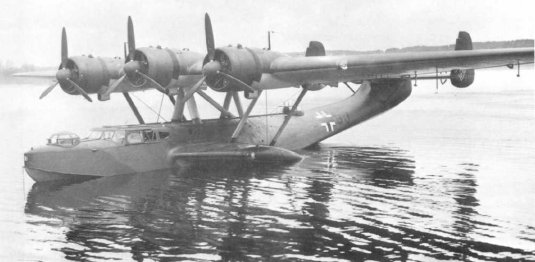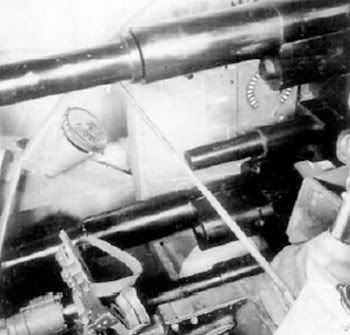second picture looks like a Do-24. (as you can clearly see the double tail in background)
As for a Do-26, here’s what I found. (no mention of a MG 404…)
Source: the flying boats
Dornier Do.26
Arguably the most beautiful flying boat ever manufactured, the Dornier Do 26 was constructed for Lufthansa to meet the requirement of a trans-Atlantic mail and passenger carrier.
Dornier by this time had extensive experience in manufacturing flying boats, as well as the novel tandem engine approach seen on so many of his aircraft. The rear engines were hinged upward during takeoff to avoid the propeller tips striking the water.
Upon the outbreak of war, the Luftwaffe took charge of all six Do 26s and utilized them for operations in the fiords of Norway, as well as general patrol and staff transport duties. In service, it was armed with a 20mm MG151 in the nose turret and MG15s in the beam hatch positions and mid-fuselage blisters. No bombs or depth charges were carried.
The boats were quite weakly armed and slow, so they were quickly relegated to behind-the-lines duties, where general attrition and lack of spares caused them to fade from service.
None survive today.
Type: Transatlantic Mail or Coastal Patrol flying boat
Origin: Dornier-Werke GmbH.
Models: V1 to V6, and D
First Flight: May 21, 1938
Service Delivery: 1940
Final Delivery: N/A
Crew: Four
Engine:
Do 26V6:
Model: Junkers Jumo 205D Diesels
Type: Each with six double-ended cylinders
and 12 opposed pistons
Number: Four Horsepower: 880 hp
Do 26A:
Model: Junkers Jumo 205 Diesels
Type: Each with six double-ended cylinders
and 12 opposed pistons
Number: Four Horsepower: 600 hp
Do 26D:
Model: Junkers Jumo 205Ea Diesels
Type: Each with six double-ended cylinders
and 12 opposed pistons
Number: Four Horsepower: 700 hp
Dimensions:
Wing span: 30m (98 ft. 5¼ in.)
Wing Surface Area: 120.0m² (1,291 sq. ft.)
Length: 24.60m (80 ft. 8½ in.)
Height: 6.85m (22 ft. 5¾ in.)
Weights:
Empty:
Do 26V6: 11,300kg (24,912 lbs.)
Do 26A: 10,700kg (23,589 lbs.)
Loaded:
Do 26V6: 22,500kg (49,601 lbs.)
Do 26A: 20,000kg (44,092 lbs.)
Performance:
Maximum Speed: 201 mph (324 kph)
Cruise Speed: N/A
Range: 7100 km (4,412 miles)
Initial Climb: N/A
Endurance: N/A
Service Ceiling: N/A
Armament:
20mm MG 151 in a bow turret
Three aft firing 7.92mm MG 15 machine guns.
Payload:
12 Fully-Equipped troops
Notes:
The Do 26 had a gull wing and retractable floats. The push/pull arrangement is interesting as the rear propellers are hinged to rotate upwards 10° on take-off to clear spray. Two Do 26’s were shot down by Hurricanes of 46 Sqn on 28 May 1940 during the Norwegian campaign.



















